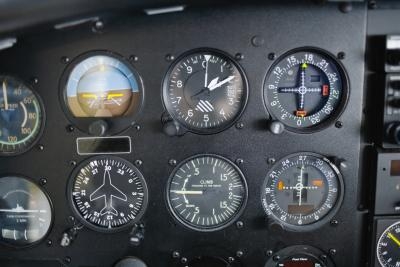
Adding new gauges to your car is a great way to add a stylish high tech "cockpit" look to your dashboard. It'll also let you monitor your engine and know when something is wrong with it, usually well before it becomes serious enough to cause damage. A temperature gauge lets you monitor that system. An oil pressure or temperature gauge helps you verify there is oil in the engine. An amp or voltage gauge monitors the charging and electrical system. You have spent quite a bit of time and money building your engine. A Sunpro gauge set can help protect that investment.
Hold the gauge pod under the dash in the desired position and mark the three screw openings with the marker pen. Drill holes for screws in the underside of the dash bezel at the marked locations. Attach the gauge pod to the dash bezel using the sheet metal screws and the Phillips-head screwdriver.
Remove the nuts securing the gauges to the pod, and remove the gauges.
Locate the oil pressure and temperature sending units on the engine. The temperature sender is usually in the front of the engine. On Dodge and GM motors, the oil pressure sending unit is usually at the back of the engine behind the distributor. On Fords, it is usually on the driver side of the block. Remove the sending units by turning them counterclockwise with a wrench.
Label and route a length of wire through the bulkhead to both the oil pressure and water temperature sending unit locations. Install the proper sending unit from the gauge kit. Strip the wires 1/4-inch from the end using the wire strippers, and crimp the proper connector on the wire. These will usually be female spade connectors.
Cut and label the sensor wires to the proper length to reach the gauges with some slack. Strip the wires and crimp small ring terminals to the end. Turn the nuts on the input side of the temperature and pressure gauges and remove them. Slide the ring terminals over the studs and replace the nuts. Tighten them with a wrench.
Route a wire from the gauges to the fuse panel and cut it to length. Label this wire "Input power". Attach a female spade connector to the fuse panel end and plug it into any terminal labeled "Batt".
Cut three pieces of wire, each 10 inches long and strip both ends. Crimp ring terminals on one end of the wires and attach two of these to the open lug connections on the temperature and pressure gauges. Attach the other ring terminal to the "+" side of the voltage gauge. Connect the wires to the gauges with the wire from the fuse panel using a blue or yellow butt connector.
Attach a ring terminal to one end of the remaining wire and connect this to the "-" side of the voltage gauge. Use an inline splice connector to attach the other end of this wire to the stereo ground wire.
Slide the gauges into the pod, slide the brackets over the mounting studs and insert and tighten the retaining nuts.